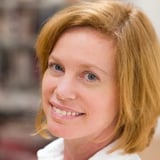Summary
In the discussion, Brennan from Target explains his design ops team’s composition, emphasizing the current presence of himself in a chief-of-staff-like role and design program managers handling high-level initiatives like onboarding and product releases. He elaborates on the emerging role of producers focused on pixel-perfect design execution and operational efficiency. Chris and Mark contrast this with smaller teams lacking producers but employing roles like scrum designers and design architects. Brennan shares his experience implementing the maker schedule in a bureaucratic environment, emphasizing the necessity of executive buy-in from VPs and COOs to mandate protected design time. Ashley Jaron raises the question of fostering and measuring a user-first mindset, with panelists highlighting the complexity, often relying on countless small initiatives rather than clear metrics. Stories like having leadership admins answer customer calls reveal impactful cultural change methods. Chris discusses their success creating a quality scorecard based on heuristics, built iteratively over nine agile sprints to translate soft design concepts into data-driven metrics, though Mark notes some organizations like CERN may resist such approaches due to their scientific culture. Brennan clarifies that most surveyed designers are not production-focused but engage in defining product features, user advocacy, and balancing design with product roles. The panel reflects on storytelling strategies to communicate design ops value, such as linking design issues to business outcomes (e.g., referral revenue) during company-wide meetings. They differentiate design ops from general operations, stressing the need for empathy and understanding of design work akin to how TPMs understand engineering. Regarding the future of design, the panel views AI and tooling as augmenting rather than replacing designers, embracing an experimental mindset with new tools. Finally, Chris defines design strategy as a team-driven broader role that goes beyond ops to include corporate planning and strategic design sprints at multiple organizational layers. Overall, the talk surfaces nuanced challenges and successes in building and promoting design ops in diverse organizational contexts.
Key Insights
-
•
Brennan’s design ops team currently has a chief-of-staff role and design program managers, with plans to incorporate producers managing day-to-day design production.
-
•
Producers likely manage detailed task execution in tools like JIRA, while program managers oversee higher-level, long-term initiatives.
-
•
Implementing the maker schedule requires executive support, especially in bureaucratic organizations, as grassroots efforts alone are insufficient.
-
•
Measuring a user-first mindset is a complex 'wicked problem' with no single metric; success comes from numerous small cultural shifts.
-
•
Engaging leadership directly with customer experiences, such as having admins take support calls, can powerfully shift organizational empathy for users.
-
•
Chris’s quality scorecard was developed iteratively over nine sprints, translating qualitative design heuristics into a quantifiable metric used by PMs.
-
•
Certain scientific or research-driven cultures may resist adopting design measurement tools due to skepticism about methodology and relevance.
-
•
Most designers studied spend limited time on production design; their core work involves product definition, user advocacy, and early-stage research.
-
•
Design ops storytelling succeeds by aligning design impact with key business metrics like referral revenue and attrition in company-wide forums.
-
•
Design ops requires domain understanding akin to technical program managers, blending operational skills with deep empathy for design work.
Notable Quotes
"I feel like I play more of a chief of staff type role than just head of design operations."
"A producer is probably in JIRA day-to-day, running tasks, creating tickets and epics, while a program manager tracks board-level timelines."
"We had to push up the ladder to VP and COO level to get the maker schedule endorsed and mandated."
"Every one of us is probably the lubricant in a system—you only notice us when things go bad."
"We took all the leadership admins to a call center for a week to make them feel what customers go through."
"We made up the quality scorecard, translating fuzzier heuristics into a hard number for our data-driven company."
"Science cultures like CERN have a huge headwind against adopting design measurement tools because of skepticism."
"Designers often have to step up and play the product manager role to define features and evangelize for users."
"We built a linear aggression model showing direct correlation between design problems and business metrics like referral revenue."
"A design program manager needs to understand at least what interaction, visual, and motion design mean—much like TPMs know engineering."
Or choose a question:















More Videos

"I believed we could do more — more for the company, customers, stakeholders, and ourselves if we had more agency."
Nalini KotamrajuResearch After UX
March 25, 2024

"If you want to go fast, go alone; if you want to go far, go together."
Dean BroadleyNot Black Enough to be White
January 8, 2024

"Racism is by design, and there's no way to counter it unless we counter it with design."
Denise Jacobs Nancy Douyon Renee Reid Lisa WelchmanInteractive Keynote: Social Change by Design
January 8, 2024

"People problems find their way to design ops because we’re known problem solvers and people run to us when morale is low."
Kim Fellman CohenMeasuring the Designer Experience
October 23, 2019

"Not every project needs to be responded to; not every RFP needs a proposal."
George AyeThat Quiet Little Voice: When Design and Ethics Collide
November 16, 2022

"Getting exact endorsement from the top helps your cause immensely."
Nathan CurtisBeyond the Toolkit: Spreading a System Across People & Products
June 9, 2016

"Platforms need researchers and designers to make them meaningful and intentional for the people they are designed to serve."
Greg PetroffThe Compass Mission
March 10, 2021

"Budget and time are the enemies of inclusivity in research."
Chloe Amos-EdkinsA Cultural Approach: Research in the Context of Glocalisation
March 27, 2023

"The new site had a 19% dropout rate compared to 32% on the old site, showing clear improvement."
Mackenzie Cockram Sara Branco Cunha Ian FranklinIntegrating Qualitative and Quantitative Research from Discovery to Live
December 16, 2022















